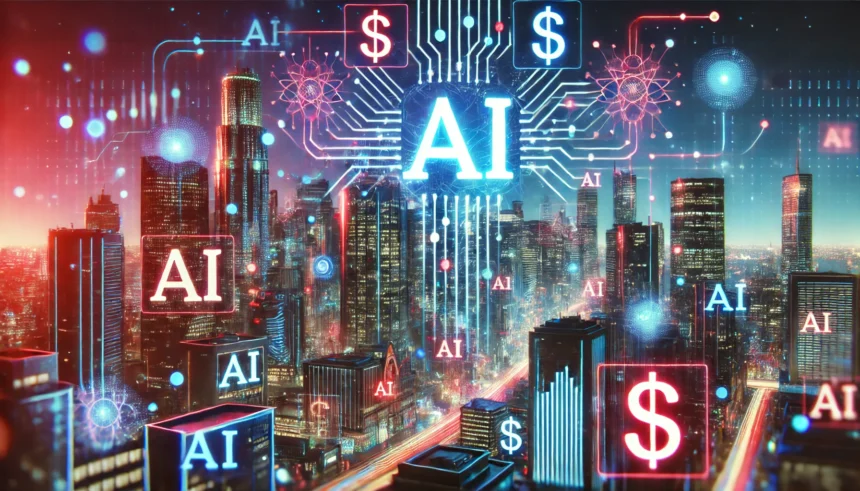Regardless of its immense recognition, OpenAI is allegedly burning by money at an unsustainable charge and will face a staggering $5 billion loss by the tip of 2024.
That’s in keeping with a shock report from The Info, which cites unreleased inside monetary statements and trade figures exposing how OpenAI has already spent roughly $7 billion on coaching fashions and as a lot as $1.5 billion on staffing.
Dylan Patel from SemiAnalysis had earlier advised The Info that OpenAI allegedly forked out some $700,000 a day to run its fashions in 2022, posting losses of just about $500 million that 12 months alone.
Regardless of producing substantial income, estimated at $3.5 billion to $4.5 billion yearly, OpenAI’s bills far outpace its revenue.
The corporate has already raised over $11 billion by seven rounds of funding and is at the moment valued at $80 billion.
Nevertheless, regardless of ChatGPT being a family title with thousands and thousands of world customers, OpenAI would possibly show an actual cash pit for buyers if nothing adjustments.
Microsoft, OpenAI’s largest backer by far, has already poured billions into the corporate in recent times.
Its most up-to-date injection of money, $10 billion in early 2023, was rumored to incorporate a 75% slice of OpenAI’s income and a 49% stake within the firm, in addition to integrating ChatGPT into Bing and different Microsoft techniques.
In return, OpenAI receives entry to Azure cloud servers at a considerably decreased charge.
However on the planet of generative AI, there are by no means sufficient chips, cloud {hardware}, or groundbreaking, world-changing concepts that require billions to get off the bottom.
OpenAI is closely invested in being the primary to attain synthetic basic intelligence (AGI), an bold and extremely costly endeavor.
CEO Sam Altman has already hinted that he merely won’t cease till that is achieved.
He’s concerned in creating nuclear fusion and mentioned creating an worldwide chip mission with UAE and US authorities backing price trillions.
Competitors is red-hot
Competitors within the generative AI area can be intensifying, with massive gamers like Google, Amazon, Meta, and so on, all vying for a slice of the pie.
Whereas ChatGPT stays essentially the most widely known AI chatbot, it’s capturing an more and more smaller portion of the overall revenues up for grabs.
Plus, the open-source division, headed largely by Mistral and Meta, is constructing more and more highly effective fashions which are cheaper and extra controllable than closed lab initiatives from OpenAI, Google, and others.
As Barbara H. Wixom, a principal analysis scientist on the MIT Middle for Info Methods Analysis, aptly places it, “Like all instrument, AI creates no worth until it’s used correctly. AI is superior information science, and you must have the precise capabilities to be able to work with it and handle it correctly.”
And therein lies a vital level. If a company has the money and technical know-how to harness generative AI, it doesn’t essentially have to accomplice with closed-source corporations like OpenAI. As a substitute, it may create its personal extra bespoke, sovereign options.
Salesforce lately proved that by releasing a cutting-edge compact mannequin for API calls that smashed frontier fashions from OpenAI, Anthropic, and so on.
OpenAI and others try to push the envelope with enterprise options like ChatGPT Enterprise, but it surely’s powerful going, as generative AI is each pricey and dubiously well worth the funding proper now.
Adam Selipsky, CEO of Amazon Net Providers (AWS), mentioned himself in 2023, “Loads of the shoppers I’ve talked to are sad about the fee that they’re seeing for working a few of these fashions.”
AI corporations are responding by slicing the prices of their fashions and releasing lighter-weight variations like GPT-4o mini, however that, too, presents a conundrum. When do corporations make the leap into AI when the choices are rotating on a regular basis?
2023 supplied few solutions for AI monetization
The 12 months 2023 has acted as a testing floor for varied AI monetization approaches, however none are a silver bullet for the trade’s mounting prices.
One of many best challenges of AI monetization is that it doesn’t supply the identical financial system as typical software program.
Every consumer interplay with a mannequin like ChatGPT requires particular computations, which eat vitality and construct increased ongoing prices that scale as extra customers be a part of the system.
This poses a large problem for corporations providing AI companies at flat charges, as bills can rapidly outpace revenues.
If subscription prices are raised an excessive amount of, folks will merely bail out. Financial surveys recommend that subscriptions are one of many first issues to be culled when folks need to in the reduction of their spending.
Microsoft’s latest collaboration with OpenAI on GitHub Copilot, an AI coding assistant, served as a first-rate instance of how subscriptions can backfire.
Microsoft charged a $10 month-to-month subscription for the instrument however reported a mean month-to-month lack of greater than $20 per consumer. Some energy customers inflicted losses of as much as $80 per 30 days.
It’s probably an analogous state of affairs with different generative AI instruments. Many informal customers subscribe to only one of many many out there instruments on a month-to-month foundation and should readily cancel and swap to a special instrument. However, there are non-profitable energy customers who eat sources with out contributing to income.
Some consider OpenAI has tried soiled methods to maintain the money flowing. For instance, the GPT-4o demo, timed completely with Google IO, revealed real-time speech synthesis options that appeared to interrupt new floor and outshine Google’s bulletins.
We’re nonetheless ready for these much-hyped voice options to roll out. OpenAI has but to launch them to anybody, citing issues of safety.
“We’re bettering the mannequin’s skill to detect and refuse sure content material,” OpenAI declared in regards to the delay.
“We’re additionally engaged on bettering the consumer expertise and getting ready our infrastructure to scale to thousands and thousands whereas sustaining real-time responses. As a part of our iterative deployment technique, we’ll begin the alpha with a small group of customers to assemble suggestions and increase based mostly on what we be taught.”
Premium sign-ups spiked as a result of folks have been wanting ahead to utilizing these new options. Was OpenAI in search of a short-term income increase pushed by options that have been by no means prepared?
Vitality prices are one other roadblock
There’s one more snag at hand in generative AI’s monetization mission – energy and water consumption.
By 2027, the vitality consumed by the AI trade might be equal to that of a small nation. Latest spikes in water utilization from Microsoft and Google are largely attributed to intensive AI workloads.
Google lately disclosed that AI was throwing its sustainability methods off beam. The corporate’s CO2 emissions have surged by 48% since 2019, and executives have all however admitted that AI workloads are in charge.
AI-induced water shortages lately gripped Taiwan, which began redirecting water from agricultural makes use of to AI amidst a drought in a bid to maintain manufacturing on-line. Water shortages hit elements of the US in 2023, too, so there are real environmental impacts to take care of.
Talking on the World Financial Discussion board, Altman mentioned, “We do want far more vitality on the planet than we thought we would have liked earlier than. We nonetheless don’t respect the vitality wants of this know-how.”
This all comes at a price, each on the firm stage for Microsoft, Google, and so on., and in addition for native and nationwide economies.
The approaching years will probably be pivotal in shaping generative AI’s trajectory, each by way of its returns or funding, sustainability, and the stress between the 2.
As Barbara H. Wixom from MIT warns, “You must discover a solution to pay for this. In any other case, you’ll be able to’t maintain the investments, after which it’s important to pull the plug.”
Will generative AI ever grind to a halt? You’ve obtained to suppose that it’s too massive to fail. Nevertheless it does appear caught in monetization purgatory proper now, and one thing from someplace must administer one other jolt of progress.
It may not take a lot to push generative AI in the direction of a mandatory flashpoint the place progress comes cheaply and naturally.
Fusion energy, analog low-power AI {hardware}, light-weight architectures – it’s all within the pipeline – we can solely wait and watch to see when all of it clicks into place.









